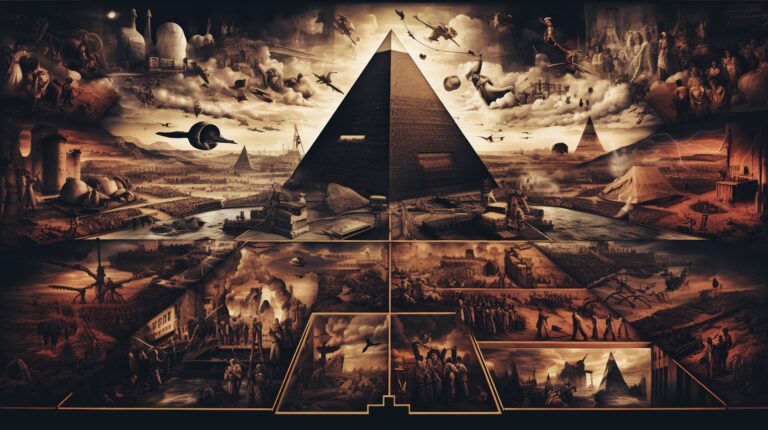The Egyptian pyramids are magnificent structures that have captivated the world for centuries—thousands of years, in fact.
How were they built?
Why were they built?
By whom were they built?
It blows my mind that nobody really knows the answers to any of these questions.

What we think we know

Officially, thousands of workers used limestone blocks over many years to construct them. For example, the Great Pyramid of Giza, built for Pharaoh Khufu, took about 20 years to complete.
They were built by ancient Egyptians as grand tombs for their pharaohs and powerful nobles. They believed in an afterlife where the dead would live forever, so they wanted to ensure their leaders had a proper place to rest.
Dude.
Seems like overkill.
It’s probably all wrong
It’s important—and humbling—to consider that we have an impoverished understanding of history.
Jason Breshears, who runs the impressive Archaix YouTube channel, proposes an alternative theory that geopolymer construction and ultrasonic drilling were used to build them over 4,800 years ago.
Hang on. What?


Advanced technology by an advanced civilisation?
You’ve caught my attention. Please go on.
He adds that the pyramids were not built by Egyptians but by a different civilisation that was wiped out by a catastrophic flood event, which, interestingly, aligns somewhat with the Biblical flood. Furthermore, the decline in the construction quality of later pyramids is due to this advanced civilisation’s decline after the flood which resulted in a loss of technology and knowledge.
Put another way, the pyramids were under water for a few hundred years.

It’s a helluva paradigm shift if true.
I recommend listening to my conversation with Ben van Kirkwyk who makes a persuasive case for human history being cyclical and not linear, creating some fascinating parallels.
It is impossible to overestimate the importance of the Great Pyramid of Giza. The precision with which it was constructed and the astronomical alignments incorporated into its design suggest knowledge and technology far beyond what we credit to the ancient Egyptians.
Robert Bauval
Conversation
Because he used a lot of visuals, there is no audio version. You will have to watch the video and, like me, have a strong drink afterwards.
It’s a combination of both incredibly interesting and genuinely mind-bending.
Jason has thousands of hours of content, so the above is merely a snapshot. It’s impossible for him to compress everything into an hour.
The Great Pyramid of Giza is the most precisely aligned structure in existence and faces true north with only 3/60th of a degree of error. How this level of accuracy was achieved with the technology available at that time is still a mystery.
Graham Hancock




